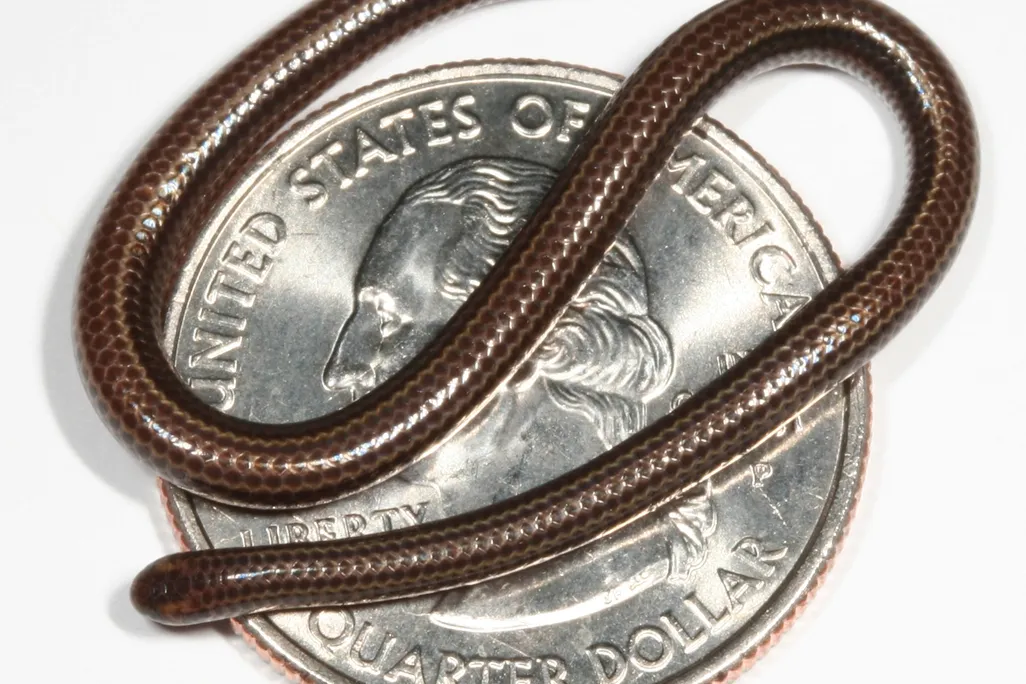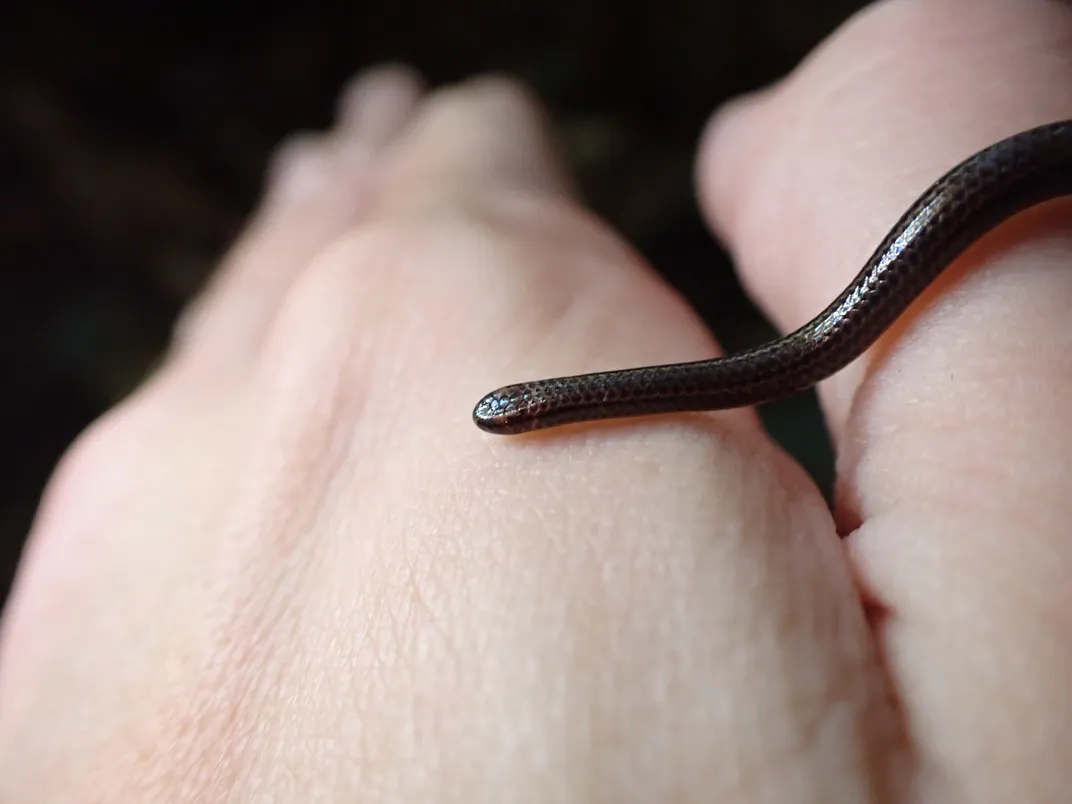Scientists Feared the World’s Smallest Snake Had Gone Extinct. They Just Found It Again
When fully grown, the Barbados threadsnake is only three to four inches long—shorter than many earthworms

A tiny, elusive snake species that hadn’t been documented for nearly 20 years has been rediscovered in Barbados.
Scientists were thrilled to find an individual Barbados threadsnake (Tetracheilostoma carlae) under a rock while conducting an ecological survey earlier this year, according to a statement from the conservation group Re:wild. The team confirmed the miniature creature’s identity by looking at it under a microscope before releasing it back into the forest.
First spotted in 1889, the Barbados threadsnake is the smallest known species of snake in the world. When fully grown, it’s just three to four inches long—which is shorter than many earthworms—and about the same thickness as a strand of spaghetti, reports the Guardian’s Taro Kaneko. When curled up, it’s roughly the same size as a quarter.

The snakes are found only in Barbados, the island nation in the Caribbean, where they roam around in search of termites and termite eggs to eat. They are blind, relying instead on their other senses for survival.
Barbados locals had long known about the threadsnake. But in 2008, researchers performed genetic testing to confirm it was a unique species and described it in a journal for the first time.
Because of their petite size and dark coloring, these snakes can easily hide or blend in with the landscape. They’ve only been documented a handful of times since they were first spotted, with decades between each official sighting.
Conservationists feared the Barbados threadsnake had gone extinct, placing the creature on a list compiled by Re:wild of 4,800 plant, animal and fungal species that were considered “lost to science.” But researchers didn’t give up hope, and they never stopped looking for the little snakes.
Key concept: Scientists look for “lost” species
Researchers want to find and record animals that haven’t been seen in a long time to get a better idea of their conservation status and how to prevent their extinction.
Most recently, biologists with the Barbados Ministry of the Environment and National Beautification had been searching for the threadsnake as part of the Conserving Barbados’ Endemic Reptiles (CBER) project.
On the morning of March 20, researchers were measuring a jack-in-the-box tree in central Barbados when they decided to lift up a rock that had been stuck under a tree root.
“I was making a joke and in my head I said, ‘I smell a threadsnake,’” says Justin Springer, Caribbean program officer for Re:wild, in the statement. “I just had a feeling, but I couldn’t be sure because we turned over a lot of rocks before that, and we saw nothing.”
When they loosened the stone and looked underneath it, they spotted an earthworm and a tiny snake. The scientists didn’t want to get their hopes up, but they thought snake looked a lot like a Barbados threadsnake.
To confirm their hunch, they placed the creature in a jar filled with soil and leaf litter, then took it back to a laboratory at the University of the West Indies. But even examining the snake under a microscope proved challenging, as it kept wriggling around. Connor Blades, a project officer with the Barbados environment ministry, finally identified it by taking a video of the snake, then studying a still image from the footage, reports the Associated Press’ Dánica Coto.
The creature had pale orange stripes along its body, eyes on the side of its head and other physical characteristics of a Barbados threadsnake.
“I was very excited,” Blades tells As It Happens’ Megan Williams, adding that his team found a second Barbados threadsnake about a month later. “Probably one of the highlights of my career so far.”
Taking a closer look at the snake was important, as Barbados threadsnakes look very similar to another species, the Brahminy blind snake (Indotyphlops braminus), also known as the flowerpot snake. However, while the Barbados threadsnake is native to the island, the Brahminy blind snake is an invasive creature that was accidentally introduced in recent decades.
Invasive animals are a major threat to Barbados’ endemic species, which are also grappling with habitat loss. Since Europeans colonized the island more than 500 years ago, more than 98 percent of Barbados’ forests have been cleared for agriculture, reports the Guardian, leaving just a small area for woodland creatures to inhabit.
“Barbados is kind of unique in the Caribbean for a bad reason: It has the least amount of original forest, outside of Haiti,” says S. Blair Hedges, the biologist at Temple University who first described the Barbados threadsnake as its own species, to the AP.
Many species on the island have already gone extinct, including the Barbados racer, Barbados skink, Barbados rice rat, Barbados rail and Cole’s cave shrimp. Against this backdrop, finding the Barbados threadsnake is a rare bright spot. Its rediscovery highlights the importance of “what we have left, and also to show that these very small and delicate, harmless snakes are important and need protection,” Springer tells IFLScience’s Rachael Funnell.

